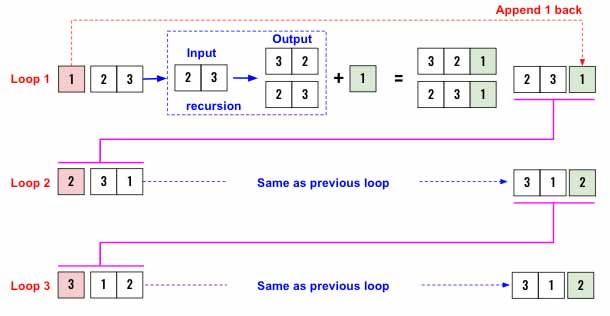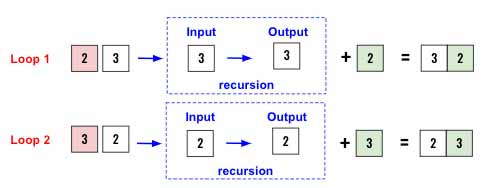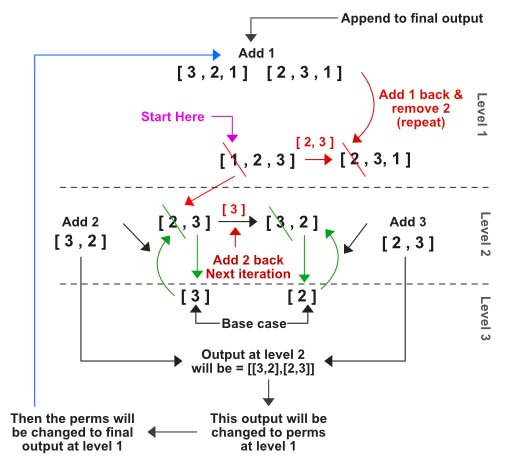Backtracking - Permutations
All diagrams presented herein are original creations, meticulously designed to enhance comprehension and recall. Crafting these aids required considerable effort, and I kindly request attribution if this content is reused elsewhere.
Difficulty : Medium
Recursive
Problem
Given an array nums of distinct integers, return all the possible permutations. You can return the answer in any order.
Example 1:
1
2
Input: nums = [1,2,3]
Output: [[1,2,3],[1,3,2],[2,1,3],[2,3,1],[3,1,2],[3,2,1]]
Example 2:
1
2
Input: nums = [0,1]
Output: [[0,1],[1,0]]
Example 3:
1
2
Input: nums = [1]
Output: [[1]]
Solution
Let’s look at solving the problem visually first. We will use Example 1 and will be running a recursive algorithm to solve this. Below diagram explains the high level design of it. We are going to have an output list which we will populate all the combinations.
- We will have a
forloop to runlen(nums)times to generate all the combinations.
1
for index in range(len(nums)):
- In the diagram below in the left all
3Loops are depicted. In start of loop 1, we will remove the element1at index0from the list.
1
first = nums.pop(0)
- Then take the remaining two elements (
[2,3]) and invoke a recursive algorithm.
1
permutation_arr = recursive_function(nums)
We should design the recursive algorithm so that it returns an array with two combinations
[[3,2],[2,3]].Now we append the removed element
1at the end of the returned list. So the output becomes[[3,2,1],[2,3,1]]. Add these to theoutputarray.
1
2
for perm in permutation_arr:
perm.append(first)
- Add the updated
permutation_arrinto theoutput.
1
output.extend(permutation_arr)
-
 Then add
Then add 1back to the original input list. This is the trick to understand. Now the array has been shifted by1and in loop 2,2will be picked as the first element to be removed.
1
nums.append(first)
Here is the python code for the same.
1
2
3
4
5
6
7
8
9
for index in range(len(nums)):
first = nums.pop(0)
permutation_arr = recursive_function(nums)
for perm in permutation_arr:
perm.append(first)
output.extend(permutation_arr)
nums.append(first)
If we pass just one element to the recursion program, we can just return that. This will be the base case.
1
2
if len(nums) == 1:
return [nums.copy()]
So let’s see how the base case going to work. From the Loop 1, of the previous diagram we are invoking the recursive_function by passing [2,3]. Below is the same diagram using [2,3] as an input and generating the [[3,2],[2,3]] as output. As we see, in the base case the same element is getting returned.
We will keep continuing this way until the loop ends (Referring back the first diagram). This should generate all 6 combinations needed.
Here is the different way to explain the same algorithm.
Final Code
Here is the full code.
1
2
3
4
5
6
7
8
9
10
11
12
13
14
15
16
17
def permutations(nums):
output = []
if len(nums)==1:
return [nums.copy()]
for index in range(len(nums)):
first = nums.pop(0)
permutation_arr = permutations(nums)
for perm in permutation_arr:
perm.append(first)
output.extend(permutation_arr)
nums.append(first)
return output



